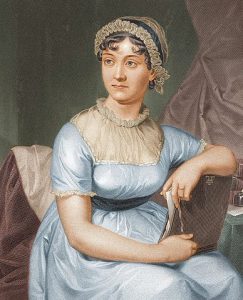-
3-minute read
-
20th November 2016
MLA Referencing – Citing a Journal Article
In the liberal arts and humanities subjects, MLA referencing is commonly used for citing sources in college papers and academic publications.
This includes citing articles from both print and electronic journals, which is what we’re looking at in this blog post.
In-Text Citations
The rules for citing an article in the main text of your paper are the same regardless of whether you’re referencing a print or online journal. With MLA referencing, this means giving the author’s name and page numbers for the passage cited in parentheses:
Neo-formalism is one of “the more notable methodological approaches to literary studies” (Markovits 591).
If the author’s name already appears in the text, only the page numbers for the passage cited need to be given in parentheses after the quotation:
Markovits describes neo-formalism as one of “the more notable methodological approaches to literary studies” (591).
Citing Multiple Works by the Same Author
Some other parenthetical referencing formats use a year of publication to distinguish between texts when multiple sources by the same author are cited in a paper. Since MLA uses a citation format with no year of publication, however, a different approach is required.
With a journal article, this means giving a shortened version of the article name in addition to the author’s surname and relevant page numbers. If both the author’s name and a shortened title appear in a citation, they should be separated with a comma.
For two articles by Stefanie Markovits, for instance, this might appear as follows:
Find this useful?
Subscribe to our newsletter and get writing tips from our editors straight to your inbox.
Subscribe to Beyond the Margins and get your monthly fix of editorial strategy, workflow tips, and real-world examples from content leaders.
According to Markovits, “programmatically formalist reading needn’t bracket cultural and historical concerns (“Form Things” 591). Consequently, we can draw upon neo-formalism while still considering the significance of Jane Austen’s “fallen bodies” (Markovits, “Jane Austen and the Happy Fall” 779).

Works Cited Page (Print Journal)
With MLA, all sources cited in a paper should be listed with full publication information on a “Works Cited” page at the end of your document. With a print journal article, this means providing the following details (accurate for the ninth edition of the MLA Handbook):
Author surname, first name(s). “Title of Article.” Title of Journal, volume, issue, year, complete page range.
In practice, this would look something like the following:
Markovits, Stefanie. “Form Things: Looking at Genre through Victorian Diamonds.” Victorian Studies, vol. 52, no. 4, 2010, pp. 591–619.
Works Cited Page (Online Journal)
For articles that are also available online, you should also provide a DOI or URL and a date of access in the “Works Cited” list. For instance:
Markovits, Stefanie. “Jane Austen and the Happy Fall.” Studies in English Literature, 1500–1900, vol. 47, no. 4, 2007, pp. 779–97, www.jstor.org/stable/4625140. Accessed 5 Oct. 2016.
If citing a scholarly journal article which is only available electronically, it isn’t necessary to provide page numbers (a DOI/URL and date of access are still required).




